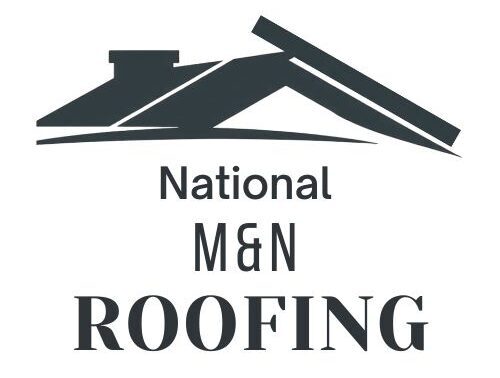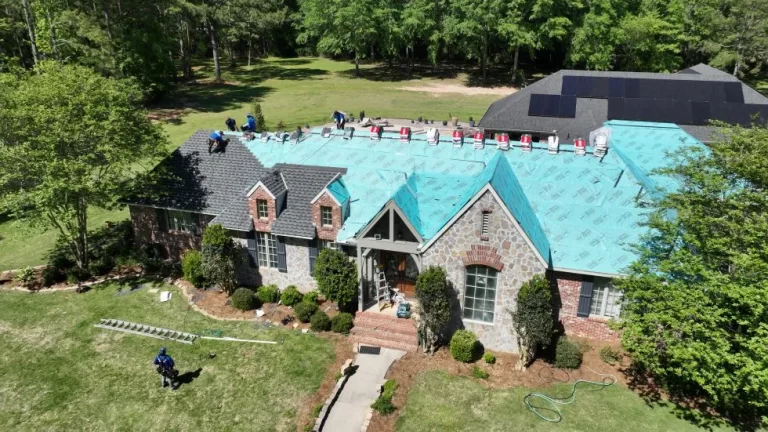Your roof is one of the most important parts of your home—it protects everything inside from the elements. But it doesn’t last forever. If you live in the Southeastern United States, the heat, humidity, hurricanes, and heavy rains can take a toll on your roof. Understanding how long your roof should last (and what can make it last longer) will help you plan ahead and avoid unexpected repairs.
Roof Lifespan by Material
In our area, the weather is a constant challenge that will reduce the overall lifespan you can expect for your roof compared to other areas of the country. With that said, we have done our best to adjust the expected lifespan below to fit our area. Disclaimer: Your roof may have a shorter or longer lifespan than the estimates below, but this should be helpful when discussing the average expectation for South Alabama and the Panhandle of Florida.
Asphalt Shingles
• 🏠 3-Tab Shingles: Typically last 15-20 years in the Southeast. They are affordable but less durable, especially in extreme heat and high winds.
• 🏡 30-Year Architectural Shingles: These can last 15-22 years with proper maintenance. However, they are still vulnerable to strong storms and heat exposure.
• 🏠 Premium Architectural Shingles: Thicker and more durable, these can last 25-30 years with proper maintenance. Depending on the shingle, they may have better sealing power than the regular 30-year builder-grade shingle.
• 🏡 Designer Shingles: These shingles are designed with unique patterns that often mimic slate or wood shake roofs. They are thicker and heavier than other asphalt versions and can last 30-50 years.
Clay and Concrete Tiles
• 🏗️ Clay and concrete tiles are excellent for hot climates but can crack with heavy rain or storm debris. In the Southeast, expect them to last 70+ years.
• 🔨 Proper maintenance is key—replacing broken tiles and ensuring the underlayment is intact helps prevent leaks.
Lasts 35-40 years in the Southeast, making it one of the more durable options. However, it has a higher upfront cost and requires more maintenance than asphalt products. While the metal panels are strong, about halfway through their lifespan, you will need to replace your screws. The rubber gaskets at the head of the screws are prone to dry rot, and all the foam closures on your ridge and valleys become brittle and must be replaced to avoid leaks.
Metal Roofing
• 🏠 Exposed Fastener Steel Roofing: Lasts 35-40 years in the Southeast, making it one of the more durable options. However, it has a higher upfront cost and requires more maintenance than asphalt products. While the metal panels are strong, about halfway through their lifespan, you will need to replace your screws. The rubber gaskets at the head of the screws are prone to dry rot, and all the foam closures on your ridge and valleys become brittle and must be replaced to avoid leaks.
• 🏠 Standing Seam Metal Roofing: One of the most durable metal roofing options, standing seam roofs can last 50-60 years in the Southeast with proper maintenance. Unlike exposed fastener steel roofing, standing seam panels have concealed fasteners, reducing the risk of leaks and minimizing maintenance requirements.
• 🏡 Copper Roofing: Can last 60+ years, but it’s expensive and usually used for accent roofing rather than full coverage.
Slate Tile
• 🏗️ Known for extreme durability, slate can last 50-140 years depending on upkeep. However, the weight and cost make it a rare choice for Southeastern homes.
• 🔍 Regular inspections are necessary to ensure individual tiles don’t shift or crack.
TPO Rubber Roofing (Flat Roofs)
• 🏢 Commonly used on commercial and some residential buildings, TPO lasts 15-20 yearsin the Southeast due to intense sun exposure and heavy rains.
• 🔧 Regular inspections and resealing seams can extend the life of this roofing material.
Wood Shingles
• 🌳 With proper maintenance, wood shingles can last 20-30 years in humid climates like the Southeast.
• 🚨 Without routine treatment for mold, rot, and termites, they will deteriorate much faster.
Factors That Impact Roof Lifespan in the Southeast
Besides the material, several factors affect how long your roof will hold up in the region.
Climate
• ☀️ Intense heat and UV rays weaken roofing materials faster.
• 🌪️ Frequent heavy rains, hurricanes, and strong winds can cause early damage.
Material Quality
• 🏗️ Higher-quality shingles and metal roofs last longer and hold up better against storms.
• 🎨 Lighter-colored roofs reflect heat, reducing wear and tear.
Installation Quality
• ⚠️ This is one of the biggest things to note from this article: poor installation can lead to premature roof failure. Read reviews! Always hire a licensed and experienced roofing contractor, preferably one who offers great warranties.
• 🔍 Regular inspections ensure small issues don’t become big (and expensive) problems.
Roof Slope & Ventilation
• ⛰️ Steeper roofs drain water better, reducing the risk of leaks.
• 🌬️ Good attic ventilation prevents moisture buildup, which can cause mold, rot, and shingle damage.
How to Make Your Roof Last Longer
Even in the challenging Southeastern climate, you can take steps to extend your roof’s lifespan:
• 🏠 Keep gutters clean to prevent water buildup.
• 🌳 Trim trees to avoid branches falling on the roof during storms.
• ⛈️ Inspect after storms for damage and repair minor issues quickly.
• 🛠️ Seal and treat wood shingles regularly to prevent mold and rot.
• 📅 Schedule annual roof inspections with a professional.
Signs It’s Time for a New Roof
Look out for these signs that indicate your roof may need replacement:
• 🏠 Shingles curling, cracking, or missing.
• 💧 Leaks or water stains on ceilings and walls.
• ⚠️ Sagging areas in the roof.
• 🌫️ Excessive granule loss from shingles in gutters.
• 🔩 Metal roofs showing rust or corrosion.
Final Thoughts
Your roof won’t last forever, but knowing what to expect in the Southeastern climate helps you plan for replacement before major problems arise. Regular maintenance and professional inspections can help extend your roof’s life and protect your home from unexpected repairs.
If you have any questions about your roof or need an inspection, please don’t hesitate to call National M&N Roofing or a trusted professional in your local area. Staying informed and proactive is the best way to ensure your home stays protected for years to come.



